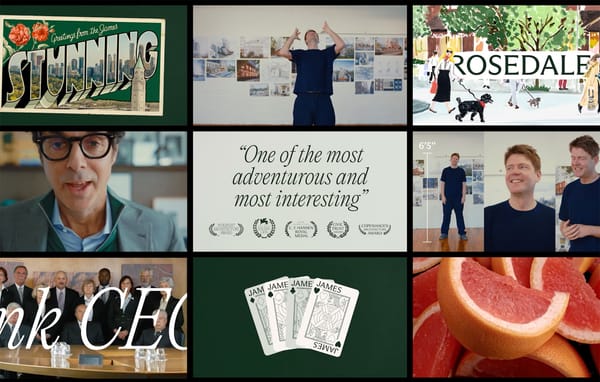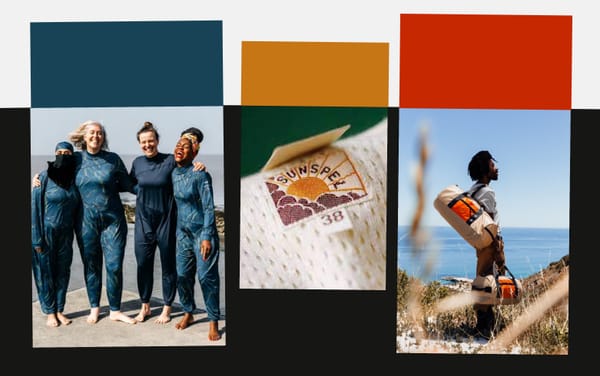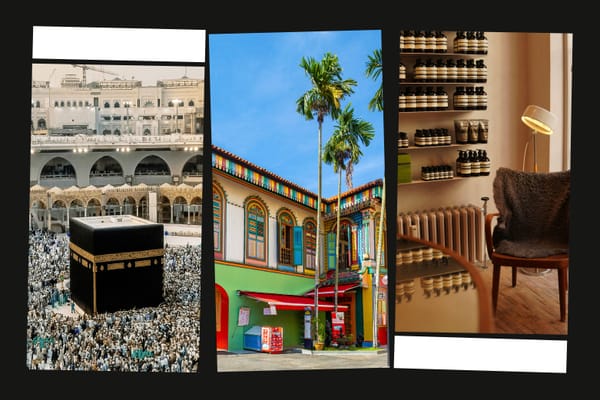Farida Abu-Bakare
The architect on working in North America and Africa, breaking away from convention, and helping along the next generation
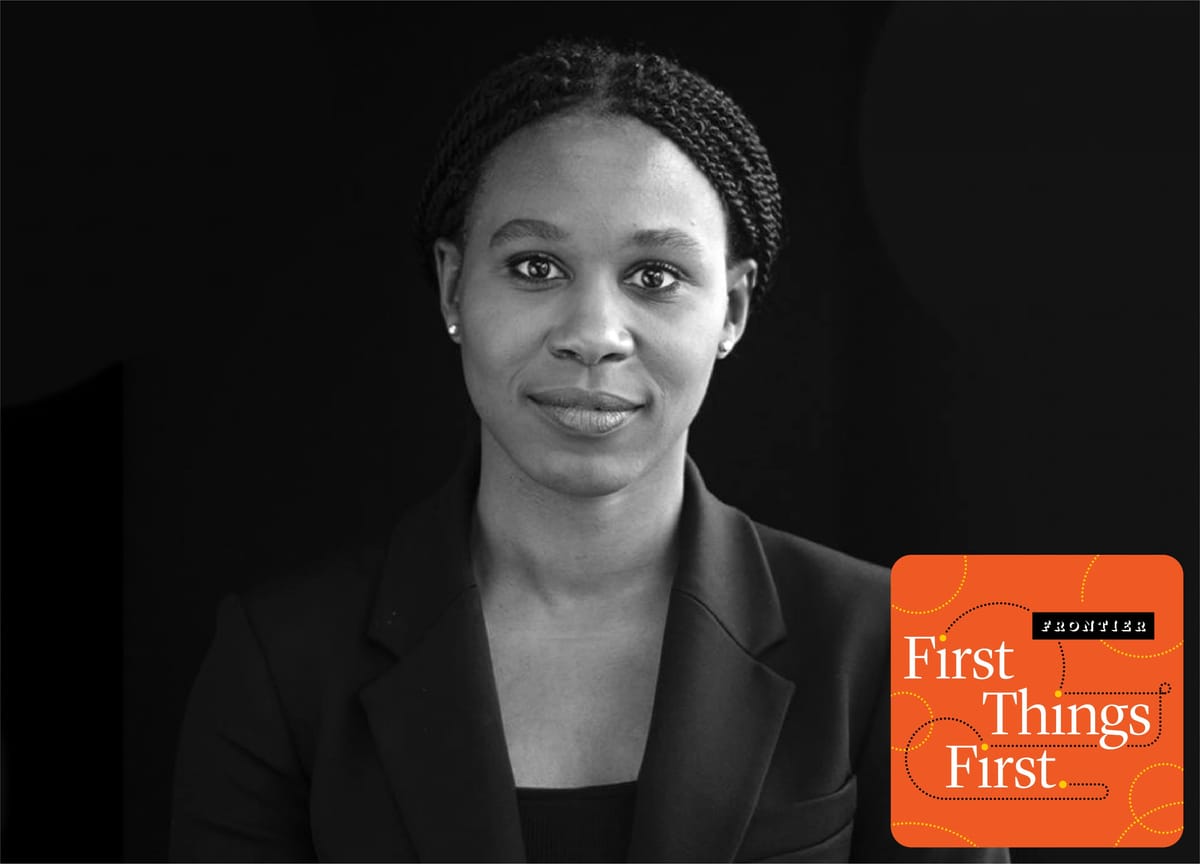
Introduction
Farida Abu-Bakare is a young architect with a startlingly wide range of experiences. She has helped design everything from airports and major cultural centers to hospitals and university science labs. And she has done this work from the US, from Ghana, and now from Toronto, Canada, where she is currently Director of Global Practice at WXY. What unites much of her work—not only in terms of design, but also in how she conceives of being an architect—is this idea of breaking away from convention and holding out a hand to the next generation.
In this episode, she discusses her upbringing, working in North America and Africa, progressing through some of the world’s most prominent architecture firms, finding purpose in mentorship, and the importance of joy to designing a better world.
Episode Transcript
Farida Abu Bakare: Euro-centric design is the guiding principles of what architecture is. Less is more and things like that. As architecture students, it’s what we’re taught. And that’s your framework when you start in architecture. And you keep those blinders on throughout because you get into studios that are exactly the same way. Led by the same people who were taught the same thing. So how do you break away from that and create something incredible so that the generation behind you isn’t held by the same blinders, right?
[[introductory music]]
Paddy Harrington: Farida Abu Bakare is a young architect with a startlingly wide range of experiences. She has helped design everything from airports and major cultural centers to hospitals and university science labs. And she has done this work from the US, from Ghana, and now from Toronto, Canada, where she is currently Director of Global Practice at WXY. What unites much of her work—not only in terms of design, but also in how she conceives of being an architect—is this idea of breaking away from convention and holding out a hand to the next generation.
Both within and beyond the firms she’s worked for, which include the global practices HOK, David Adjaye Associates, and WXY, she has advocated for the value of diverse perspectives. This work led her, in 2020, to co-found BAIDA, the Black Architects + Interior Designers Association, which specializes in mentorship and educational programs for young people interested in design. It is perhaps the variety of environments in which she was raised, and the volunteer work she did when young, that helped shape that focus.
FAB: So, my parents are Nigerian. More interestingly, my dad’s Nigerian-Canadian and came here in the ’60s or ’70s to do med[ical] school here in Toronto. He went back to Nigeria, got remarried, we all had Canadian passports but lived in the Middle East.
So: [I was] born in Doha, lived in an American compound in Saudi Arabia, grew up there, went to a British School. Mom was British. And then, as we were kind of getting older, the Saudi Arabia system back then, in the ’90s, basically Grade 11 was the last grade that girls needed to be educated. So [we] had to move back to Canada—because my sisters were in boarding school in England—um … moved to Canada in ‘95, lived in New Brunswick, um, so started school there. And then stayed there for about six years until a lot of bouts of racism and issues in New Brunswick. So we moved to Thunder Bay, of all places. I started my high school there. Knew that I wanted to do architecture, so I focused on sciences and math. My mom really wanted me—she also was an artist—to, like, tap into that side of myself. They really pushed me to keep going with courses at college to learn about drawing and the setup.
And then, um, got into Carleton and decided to pursue architecture. Started that program and was there … and obviously Carleton is very theoretical. It was really a lot more drawing, um, more kind of model-building, which was really great because when I shifted into [a] master’s [program] at Ryerson [now Toronto Metropolitan University], it was purely technical: software, RevIt, Rhino. And then, from there, started as a receptionist at HOK because I graduated in 2012, which was like the hell of the recession. They cut about 30 people the week I started.
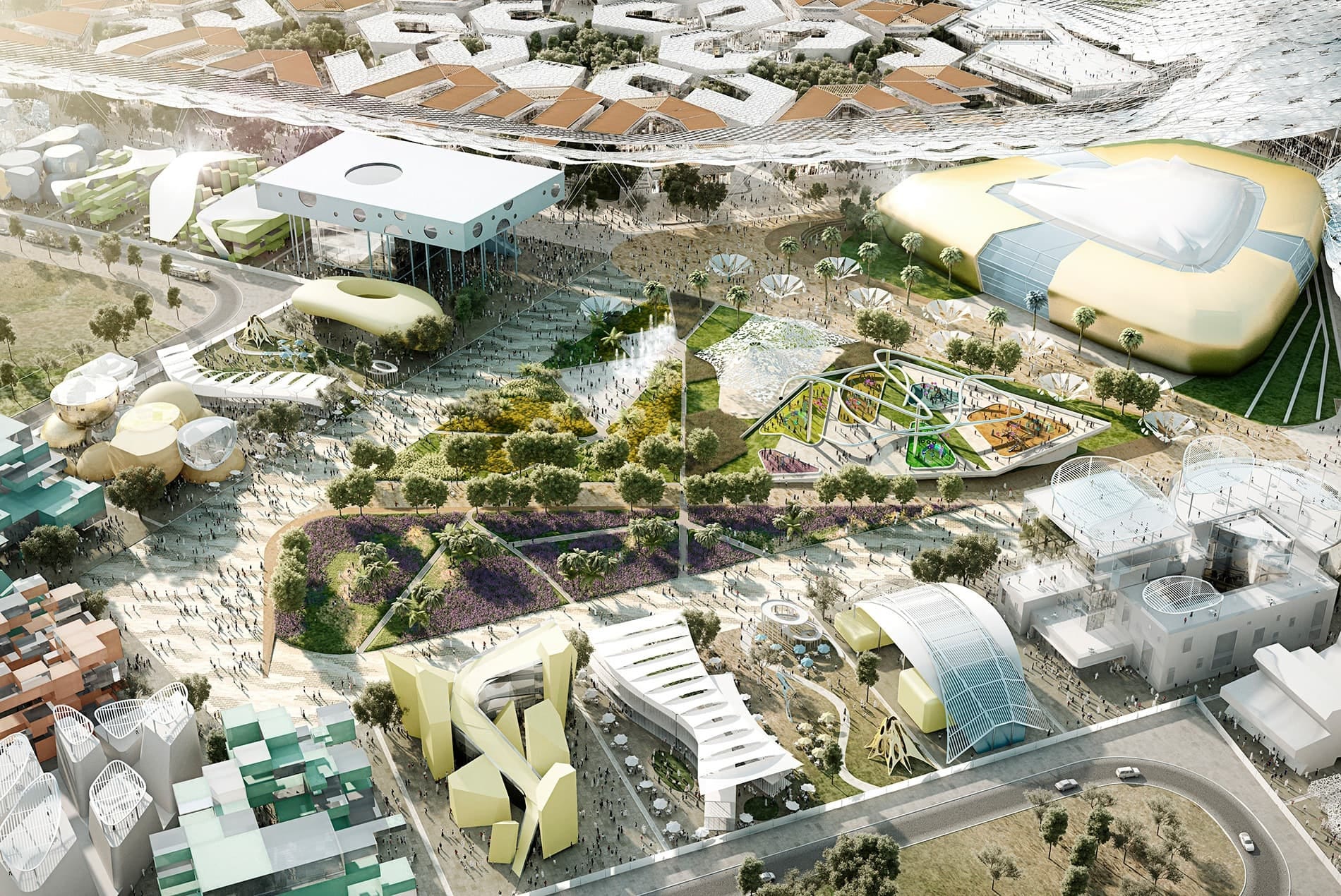
PH: But the seeds of opportunity can grow in such inauspicious moments …
FAB: When I started, I was working with the planning team on the Dubai [Expo 2020] master plan. I was in reception designing elements for this master plan! “Can you help me with renderings? And InDesign?” So I got to tap into all those tools. And then they also realized that I knew RevIt and SketchUp and so I was, like, building my portfolio but I was also, like, teaching people SketchUp. I’m like, “Why am I in reception?” So it started this whole conversation.
Anytime a CEO came from the US, I was the first attraction. So I would tell them about myself. So I did that a few times and, eventually, got taken off the desk. And moved to Calgary because we had won this Imperial Oil campus that was five buildings. I wrote my exams that year, uh, but then oil and gas in Calgary was dropping. We lost the Imperial Oil project, Shell projects, all the things that, like, were creating the foundation of what I thought was going to be my career path … was gone. And everybody was losing their jobs. You’d see, like, 300,000 people left Calgary at that time, in 2015.
I was like, “OK, so, what office can I pick that has such a diversity of projects that this will never happen again?” And Atlanta had science and technology, the Mercedes-Benz stadium, it had the Porsche Design Center, it had academic work—like eight universities, including Georgia State, Southern—so they were super busy and super small. So I was like, “OK.” And they had Susan Williams, who was basically the managing principal of DC at the time and then Atlanta. I was like, “This is an opportunity to have a great mentor.” So I moved to that office and it was incredible.
PH: Mentorship became a throughline in Farida’s career, and in her ideas of what a more equitable design industry looks like. Her work and her personal life took her back to Toronto, where she worked on a wide range of initiatives at HOK. Then …
FAB: COVID happened. I took a look at my portfolio and thought, “What am I doing?” [laughs] I wanted to do more design work. I liked David Adjaye’s work, I liked Francis Keré’s work.
And that’s when I really started [to think about], “What is Canadian architecture?” And is it more Indigenous design? I had started thinking that during grad school because I’d done my thesis on Indigenous architecture and studying sustainable principles from that. And I’d done a lot of work in First Nations communities when I was in high school, because I’d volunteered through the Multicultural Youth Center in Thunder Bay. How could I look at that and translate it not only to Indigenous architecture but … like, people that were before immigrants that came here, communities, especially Black Canadians in places like Halifax, like they’ve been here for four hundred years. How are they building Canada and what defines that?
PH: This line of thinking led to bigger questions about her own identity, and in trying to answer them in service of helping the Canadian architecture community, Farida ended up provoking the largest change her work life had seen to date.
FAB: So when that thinking started happening, I was like, I really need to kind of look at my background as an African and diaspora. Who is doing the work there right now? And how can I kind of help bring that thinking here [to Canada]?” And so I reached out to the CEO of Adjaye Africa, which is Kofi Bio, and I said to him, “You know, we’re trying to pursue work here. There’s not really a defined Black Canadian architecture. But I see that you guys are trying. If we can find a way of using our technical skills and bringing in someone who has a design vision, a design thought leader, then it would actually help us because have … we’re working to our strengths, and it shows we understand where we’re weaker. And so I tried to sell it and I sold it so well that they were just like, “Why don’t you come work for us?” [laughs]
That was just around April or May of COVID, like 2020. At that point I was like, “Well, no, I’m reaching my eight years at HOK, I want to figure this out.” I think at that time we all thought it was just going to be the summer. [laughs] And by the fall, the realization that this was not going to be just the summer, but was going to be two years, it was like, “OK.” And the lockdowns in Canada were super stringent. I was like, “OK, I need to make a decision.” It took me four months. But by September, when Ghana started opening up, they called me and asked, “Are you still interested? What do you want to do?” And I was like, “OK, let’s do this.” [laughs]
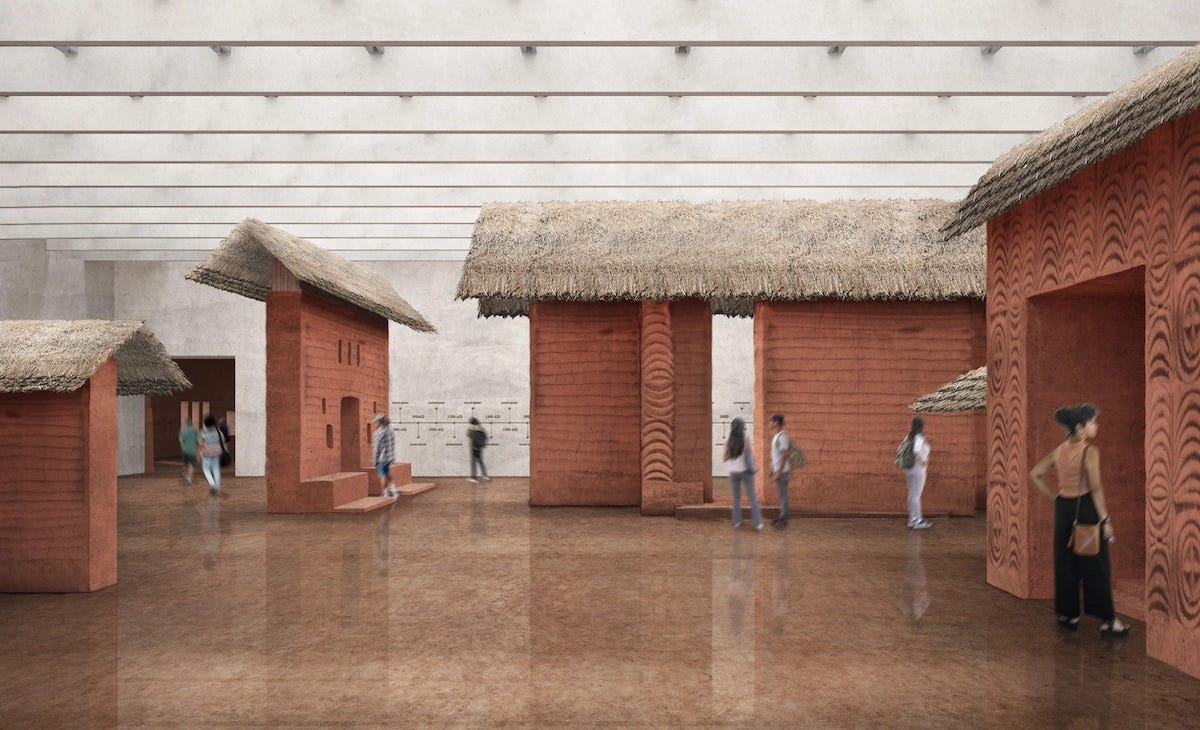
I started as senior project architect in September. They told me, you know, “We need to work through these projects that are basically” … what was it, it was museums, first. EMOWAA was the one in Benin. Essentially it was in a city that my dad was born in. And I mentioned this in passing, and they were like, “It’s so interesting, I didn’t know you were working on this. It’s like … and slowly that project became mine. The story of it, and the space, and the city, which, you know, … all these items that were stolen from Nigeria were going to be returned back. And just, like, it felt really kismet. And it spoke to exactly that identifying who I was. And so I really sat in that. And there were some other projects with healthcare. A project that I never imagined would even be an Adjaye project, so I never even mentioned my healthcare background because I didn’t think it was applicable. So, building 111 hospitals across Ghana, um, that would basically form their system for healthcare. And then, I thought, “OK, this makes sense. All my tools and all my background are coming into application.”
(25:05) And so come January I got promoted to project director. So I started working on projects that were all based in West Africa. Those projects really gave me some clarity with myself as an African and what we are giving back to.
PH: You’ve described a kaleidoscopic set of experiences. I know that in our past conversations you’ve discussed your story in terms of mismatches. I might infer, from your description of everything you’ve done, that part of the mismatch is that eclectic range of projects. But I’d rather hear it in your own words: what do you mean when you say your work life has been a series of mismatches?
FAB: I think that, traditionally, architecture [has] three streams. It’s always either the technical, or the management, or the design. Any large firm will put you in those three brackets and make you focus. I have had [laughs] the time to, like, try each one and see what I like about each thing and then marry them into one thing. Which isn’t the traditional path and probably irks a lot of people. But each experience has taught me different skills. And I like focusing on my weaknesses. So to be able to dance around those things, to shift those into strengths slowly over the years because I’m able to dabble into them. But if I focus in and pigeonhole myself in one, then, does that make me a good architect, necessarily?
(35:18) And that’s the thing that always grabbed me at HOK: “You need to specialize, you need to write white papers on science and technology or healthcare or aviation. What is it you want to do? You just need to be a specialist leader in that.” But that never made me feel comfortable, because I haven’t explored enough to know that that’s what I want to do. So I want to spend my first—it’s like my tenth year now of professional practice—um … I want to spend that time really exploring everything and then deciding what elements really stick with me and I feel I can contribute [to] better. And now I obviously know … I’m more attuned to project management. I like projects being on budget and on time. But I also do like a really good design, because I’ve been exposed to great design and I know those things are possible. And I feel, as architects, we’re often told you can’t have it all, you have to pick and choose. But then being exposed to David Adjaye Associates, where it’s like, “We need to make sure this is beautiful. How can we do that?” Working with Sir David Adjaye on projects and seeing his thinking and how he approaches things completely out of that space. So taking those skills and applying it to my day-to-day now, when I look at a site, I want to look at a site responsibly. How does it bring in natural light? How does it bring in the materiality of what already is there? And also, how will the end user enjoy it? Will there be moments of play? I want them to enjoy it and want them to be excited about the architecture.
And that’s what I think, really, is lacking right now in a place like Toronto. I get it, materials are expensive. And a lot of the projects I’ve found, you know, this budget and you have to stick to that. But I think there’s a way of that simplicity of just trying to find joy in architecture again, that is just like, how do we do that within that budget and how do we strive to make people more excited about it? Maybe it’s more about trying to find ways of being playful with architecture again and then really looking at the history.
PH: To test the hypothesis of this season: can design accelerate positive change? Can architecture and design create more inspiring experiences for people, while also advancing positive social and environmental change? Within the world of architecture, there’s a system known as LEED. It’s often criticized within the architecture community for being too much about checking boxes rather than solving the actual problems it’s meant to address. It’s an evolving system, ando ne that needs further development if it’s going to be successful. We’re beginning to hear more and more about healthy buildings. These are buildings that support better health for the people who use them, for the way they use natural resources, promote a positive economic impact, and create less environmental impact in how they are built. We’re still in the early days. The path to a more sustainable future is complex and deeply dependent on progress across all areas of human activity. Solar energy may not be viable today as an easy alternative to fossil fuels, but it’s more viable than it was twenty yeras ago. Things take time. The important thing is that we’re making progress. We’ll never get it all right at once. But millions of people, all pushing their own industries forward, will have a cumulative impact that will be far greater than the sum of its parts.
Architecture has other factors to consider, too, as projects are developed. There are simply so many things that are going on when building new spaces. It can be difficult to understand the full complexity of the process.
FAB: I think that, at Adjaye Associates, people don’t really understand the amount of research that goes into a site, and not only the site, but, like, the project. Where was it originally on the site? If it’s a museum, what holds it to be a public space? What is public space in Africa, what does that look like? What are the things that are working? There’s so much opportunity to do cool projects with materials that are responsible. Less glass. Less concrete. So, how do we normalize those things?
PH: What I find powerful about what you’re saying is this sort of seeing things from a perspective that maybe other people aren’t seeing. And I think that often comes from when you’ve had experiences where you are an outsider to the culture that you’re in. And I mean, interestingly, even when you went back to Ghana you were an outsider because you hadn’t [previously] lived in Africa.
FAB: That’s right.
PH: I’m just curious about this idea of … I mean there’s a lot of themes that came up there in what you were just saying … but something about perspective and seeing how you seize and see opportunity. What’s your experience of being able to see those opportunities that maybe other people can’t? And then how do you get them to see those opportunities?
FAB: I think a lot of people use excuses of, like, it’s never been done before, but that’s the whole point: you’re supposed to do things that have never been done before. I’m always thinking that step ahead because I feel like if we only concentrate on now, things don’t gel or excite me that way. It’s like, OK, if we can shift an entire way of thinking, not just in design but also in the way we build and the way we do our detailing, what is the step ahead? And even though it doesn’t necessarily work now, if we create the framework where you’re all thinking differently, then we can all shift that thinking.
PH: A big part of what you’re talking about, when you mention getting a whole group of people to shift their thinking, is that it requires inspiration to bring people along. In 2020, right around when you were moving to Ghana to join Adjaye Associates, you co-founded the Black Architects and Interior Designers Association here in Canada. Can you talk about that, and about the inspiration involved in trying to shift the way people think?
FAB: Even early on in my career, because I felt like everyone was doing things incorrectly, I had to inspire others to believe in what I was believing. Very early on with my work with BAIDA, everyone was like, “It’s just going to be a membership organization. We’re just going to meet and have dinner.” And I was like, “No. Hold on. Why are we meeting and what is the purpose? What is our mission? We have a really powerful thing here. Where are the students? Why are they not working in our firms during the summer? How can we help them?”
And so we started the mentorship. And they’re like, “OK, this actually works, because I like doing portfolio reviews and I like helping them.” It started to hit a note of “I enjoy this.” And I’m like, “Great, we’re doing mentorship now. But we need to do outreach.” Slowly people started to understand that we can enjoy just being architects, but if there’s nothing coming in our place, and the people that are actually interested aren’t empowered and they’re going through the same obstacles we went through twenty years ago, then we’ve failed. I feel like it is all of our responsibility to make sure that the communities feel that they understand the built environment. If we’re not doing that, then what are we doing? [laughs]
PH: Every action, every connection, has an interconnected web of other dependencies. If you want to change one thing, you kind of have to change many things.
FAB: Exactly.
PH: I think it’d be good just to take a second to say, what is BAIDA.
FAB: BAIDA is a nonprofit organization that’s run by interior designers and architects and architectural students, that basically is meant to empower a group of youth that are pursuing architecture and design. And then also create a space where professionals can grow and mentor younger generations to also lift themselves up within their firms. That’s really what we’ve become: a safe space for people pursuing architecture that are of Black, Canadian backgrounds.
PH: Why did you start BAIDA?
FAB: It started as a social group called I See You, which Camille Mitchell began in 2017 as just like a first dinner, let’s get together, let’s connect, talk about the qualms of working in a white space and in traditional firm models. A lot of people were kind of having trouble with identifying what wasn’t working within that framework and what did that mean for them in terms of leadership roles and continuing to pursue architecture and just feeling really disenfranchised. Whenever a Black architect came, we would host them and let them see other Black architects that are thriving in spaces that aren’t really built for us but have found their way. So maybe that would kind of empower us.
That’s when I slowly started realizing that network[ing] was the most important factor that was missing in architecture for us. It wasn’t just that, you know, we’re entering firms and we’re not kind of being able to bring in work and we’re not able to kind of be promoted, it was that, you know, we didn’t have the network to bring that work in or to be promoted because we didn’t know the right people. So how could we build that network with our own community and then find ways of uplifting each other through those channels? If we started speaking to leaders and connected them with the students who were having trouble finding jobs there then maybe there’d be excitement around that. Initially it was hard. [Laughs] And obviously 2020 changed a lot of things for us. We realized we had to be outward-thinking so people could see the work we were doing and help us. It wasn’t enough that we were only doing it for ourselves.
So we started aligning ourselves with, [for example], the Toronto District School Board. And then universities, like, Daniels was incredibly helpful in giving us access to their students, which then formed Black Students of Design. It became an organism that was way larger than what we imagined. When we started linking arms we realized, OK, these are our strengths, these are our weaknesses. We were really trying to understand what our vision is, and we realized it is about the youth. How do we build a kind of space where they can thrive in the studios that we are in?
We’re going to continue to push for the sense of community that is outreach-driven, that is linking arms with other organizations that are doing the work because we feel in that way we can shift our focus and strategy on just building up our community and giving them a network they can tap into so they have resources that are way beyond us. And … I think it also gives people … students something that we never had. We never had this amount of support. It’ll change a lot of perspectives on how people pursue architecture.
There is some shifting that is happening in trying to make people feel like there are other realms in architecture that haven't been explored that are super exciting. And there is work on the continent that is super exciting. And you should try to pursue education that gives you access to that, and also professional opportunities and give you access to that.
PH: If you think about all the things that you are in the process of working on changing, and all the different tools that you have had to use to try to encourage and foster change, what role do you think inspiration has to play?
FAB: It’s a guiding principle for me. Because if it’s not inspiring, then why are we doing it? We want to make sure that everyone feels that they have a contributing factor in the way that a Black high school student pursues architecture. It can be anyone. We don’t only need to work with Black firms. We work with Diamond Schmitt, KPMB, MJMA, RAW Design. “Well, we don’t have Black people on staff”—you don’t have to have Black people on staff. That has nothing to do with guiding someone’s process. You can do a portfolio review. You can do mentorship. You can take on a mentee through the summer. You can bring them in for the year. The small little five minutes or ten minutes—it doesn’t need to be such a huge commitment. Small little changes will shift the way they think about themselves and build their confidence. I think that inspiration … the way that we’ve done it is just creating a space where people can be curious and, like, ask questions. And a safe space shouldn’t be just for people of color, it should be for everyone. If you feel you’re shifting your thinking and diversity is now important to you, let’s help you do that. How can we help them rather than try and hinder them from doing it because they feel like they don’t know what they’re doing? And so, you just have to be welcoming and be gracious and make people feel comfortable.
PH: There’s actually something quite powerful in the world of creativity and design where diversity can start to unleash some of the joy that you talk about as being so important. I feel like you argue that diversity itself can be an accelerator. So how is that the case?
FAB: Diversity of thought is not just in race. It’s in age. And that age group, from 25 to 30, is key, I think, right now to shift the way architecture is going. Because if we continue to let it be this secular thing from the associate to principal level, it won’t change or grow or evolve. It’ll constantly be the same thought because that age group all went through the same schooling, the same mentors, through the same vision of awards they were all shared. Now this younger generation is of the social-media era of Pinterest and Instagram and they see a lot more and are exposed to a lot more. Things you won’t see in your day-to-day [life] they see, and they think of it as normal but in your mind it’s something that you would never have seen. So when you collaborate and collide those two things, it becomes something really beautiful because it’s different generations of thought.
PH: There is this theme of joy that you keep almost wanting to remind us. And so I’d just like to hear more about why joy is important.
FAB: Joy is important because I feel like architecture is such a serious profession and we don’t take time to step away and … and … find the playfulness in what design is, sometimes. And I think, um, the reason to … guide inspiration for youth to pursue architecture, joy is the best element. Imagine what LaGuardia was before, people couldn’t wait to get out of there. It’s just watching people kind of laze around and spend time in areas that you would like to rush out of is like, this is exactly what good architecture is. They’re enjoying the design elements, and the time and the effort that was spent on the little things that you think aren’t worth it. It changes their demeanor when they enter a well-designed area. It makes people want to take in these elements. They might not necessarily understand them but, like, we thought of their procession through that space and wanting them to linger and to stay. When you put joy at the helm of what you’re doing you’re not looking for an Instagram moment, you’re looking for something that lingers a little bit longer. And then, from there, you normalize good design and everyone benefits from it.
[[outro music]]
PH: Joy. Yes, we need to change how we do things if we’re going to protect life on earth. But we won’t do it unless we accept that joy is an important part of the human experience. Maybe it’s Farida’s diverse set of experiences that has allowed her to understand the importance of joy as a necessary outcome of design. In any case, it’s her dedication to celebrating diversity in all its forms that seems, for her, to be fundamental to creating more joy for more people, everywhere. That’s the end of this episode. Thanks for listening.
Audio note
This episode was produced by Heather Ngo and features an edited version of “A Dreamy Fender Rhodes” by Bobby Cole; an edited version of “The Lost Window” by J. A. Powers; edited versions of “At the End” and “Go the Distance” by The Sound Room; an edited version of “Water Fragments” by Joel Loopez; and an edited version of “New Beginnings” by Eddie Gray.

